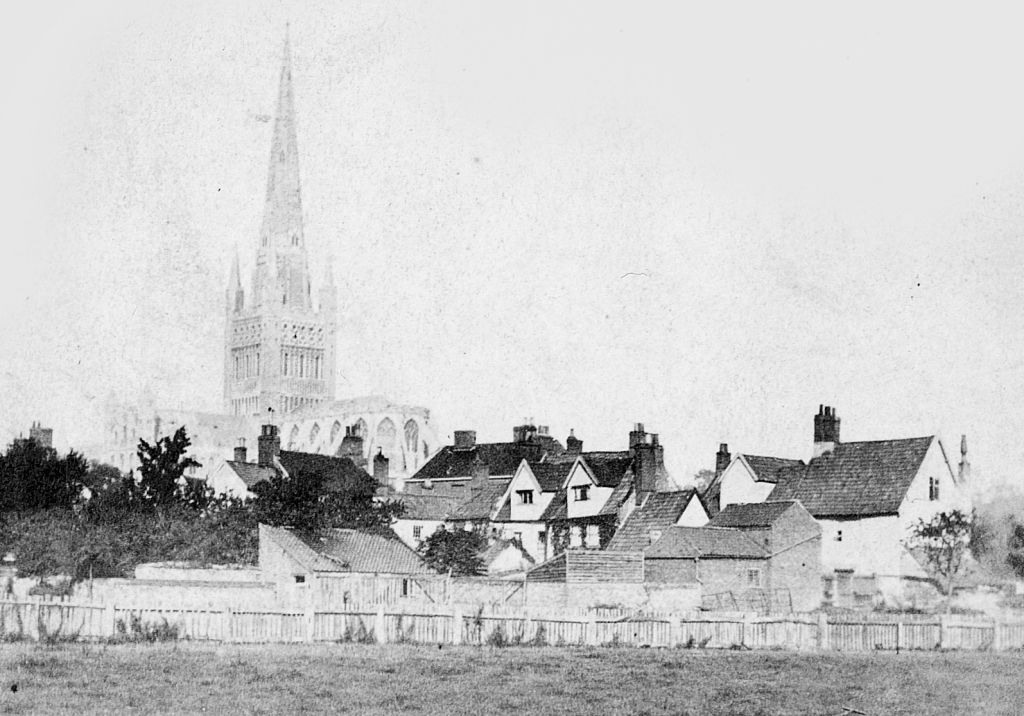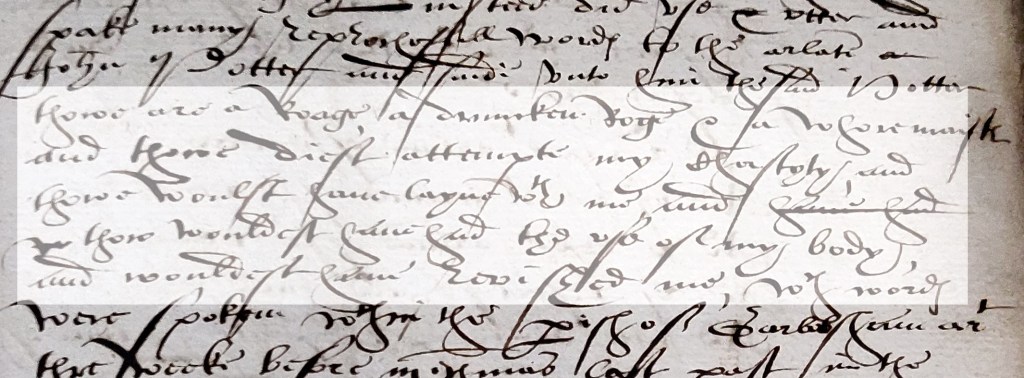Introduction

Courtesy of www.picture.norfolk.gov.uk
Church court records, more specifically the records of the Norwich Consistory Court, are probably the most salacious at the Norfolk Record Office (NRO). Before the mid-nineteenth century, church courts had jurisdiction over many aspects of life, including matrimony, probate, church taxes, sexual promiscuity, and defamation. In effect they were guardians of a person’s moral wellbeing. For this reason, their archive, especially witness statements, also known as depositions, offer an intriguing insight into everyday life. They are sure to add great interest to family and local history.
The Norfolk Record Office, with the support of its charitable partner, the Norfolk Archives and Heritage Development Foundation (NORAH), has started work to unlock the stories contained within the records, which cover the late fifteenth to the nineteenth century. And because the Diocese of Norwich covered Suffolk as well as Norfolk during most of this period, the records contain entries relating to both counties.
This blog post will introduce the records, explain why they can be so difficult to use and outline how they can be made more accessible. Other blog posts will follow, which look more closely into the records contained in the Norwich Consistory Court archive.
What does the archive contain?
The legal process was a lengthy one and created several types of records, many of which have survived. The way the records were created and kept, makes it difficult to locate all the records which relate to the same case, known as a cause in ecclesiastical courts, until everything has been indexed by name. At the NRO, most of the Consistory Court records have a reference of either DN/CON and DN/DEP.
A good introduction to these types of records is given by the York Cause Papers website. Created by the University of York, the website contains a detailed catalogue of papers of cases heard at church courts of the Diocese of York. The site includes historical background and a glossary of terms.
From the very basic cataloguing already completed, we know there are a lot of depositions in the Diocese of Norwich collection. These witness statements are incredibly interesting. During Covid enforced lockdowns, archivists at the NRO, working off digital images, started cataloguing in detail some of the depositions; namely DN/DEP 46/50 (covering 1661-4), DN/DEP 52/57 (1691), and DN/DEP 56/60 and (1709-15).
Most entries appear to relate to defamation cases. A person’s reputation was important, damaging it could have significant consequences such as loss of income or social standing.
Below, is one example. It is a statement, dated 1614, of William Tooth(e) in which he recalls Margery Linsteed accusing John Potter of attempted rape. It is important to note, John Potter is accusing Margery of defamation, he is not being tried for attempted rape. The alleged incident took place in Garboldisham, Norfolk.

The above extract accuses Margery of saying ‘thowe are a Roage, a drunken Roge and a Whore maister and thowe diest attempte my Chastyty and thowe woulst have layne with me and thow wouldest have had the use of my body and wouldest have rovished me.’ With the grammar and spelling modernised, the entry reads, ‘You are a rogue, a drunken rouge and a whore master, and you did attempt my chastity and you would have lain with me, and you would have had the use of my body and would have ravished me’.
There are other types of records within the archive which will be of great interest to family, local and social historians. They include records relating to the punishment handed out by the courts such as penances and excommunications, and bundles of evidence which are likely to be treasure troves of property records.
Using the records of the Norwich Consistory Court

Accessing the records of the Consistory Court can be rather difficult.
The number of documents that have survived is large. A few hundred boxes contain hundreds of thousands, perhaps more, transactions and names. Though, they have an entry on the NRO’s catalogue, such as ‘File of libels and allegations, 1681-1685’, there is nothing to indicate who or to where the documents relate. Only those researchers with a lot of time, and for the earlier documents, the ability to read early modern handwriting are likely to find documents relevant to their research.
Many of the records are marked ‘Unfit for production’. This is unsurprising for documents which may be at least 300 years old. It suggests that the documents are so fragile, that any handling could cause the permanent loss of information.
Making access easier
The NRO is constantly looking to aid access to archives in its care. However, the work required to conserve and catalogue all of the Norwich Consistory Court records to the required level is vast. Limited staff resources must be used in the most efficient way to unlock these treasures. The NRO is therefore having to look at a box or volume at a time.
It has received funding from NORAH to conserve a box of penances and to engage volunteers to catalogue them. This work will be covered in a future blog post. Needless to say, the NRO is very grateful for NORAH’s support. The NRO is also working with students at the University of East Anglia. They are practicing their palaeography skills by cataloguing some early modern depositions.
If you want to support the work to conserve and catalogue the Norwich Consistory Court archive, donations can be made to NORAH. By doing so, you will be helping us open up this amazing insight into how we lived our lives 300 or more years ago.














Fascinating. Looking forward to future posts
LikeLike
Extremely interesting. Keep up the good work. Thanks
LikeLike
Excellent as always. Await further posts with keen interest.
LikeLike